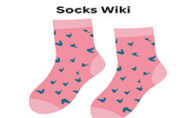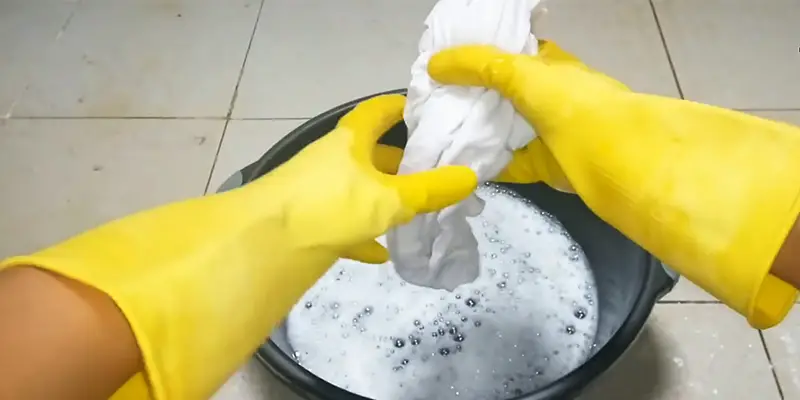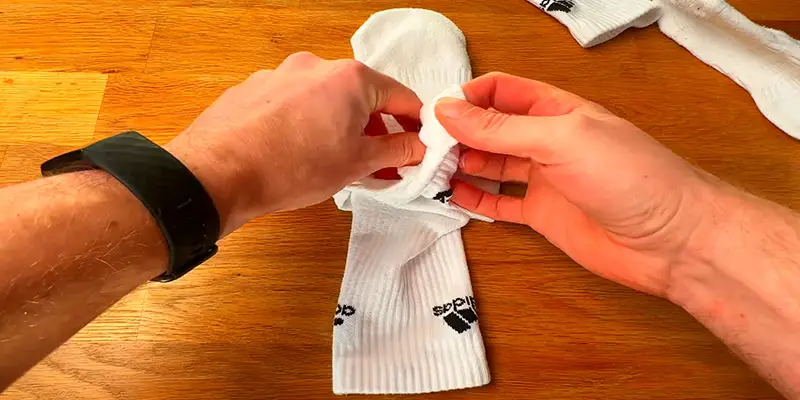Hi, I'm Christopher Bevans, the creator of SocksWiki.com. With a background in fashion design and a passion for innovation, I’m here to share my knowledge on socks from troubleshooting tips to detailed buying guides. I believe the right pair of socks can make all the difference, and through this site, I aim to help you find the perfect fit for every occasion.
Hi, I'm Christopher Bevans, the creator of SocksWiki.com. With a background in fashion design and a passion for innovation, I’m here to share my knowledge on socks from troubleshooting tips to detailed buying guides. I believe the right pair of socks can make all the difference, and through this site, I aim to help you find the perfect fit for every occasion.
Keeping white socks looking fresh and bright can be a challenge, especially as they tend to pick up stains and odors over time.
An effective and eco-friendly method to restore their whiteness is by using vinegar. This natural ingredient not only helps to lift stains and neutralize odors but also acts as a fabric softener, making your socks look and feel cleaner.
By following a straightforward process of pre-soaking, pre-treating, washing, and drying, you can achieve brilliantly clean white socks without relying on harsh chemicals.
Step-by-Step Guide on How to Clean White Socks With Vinegar
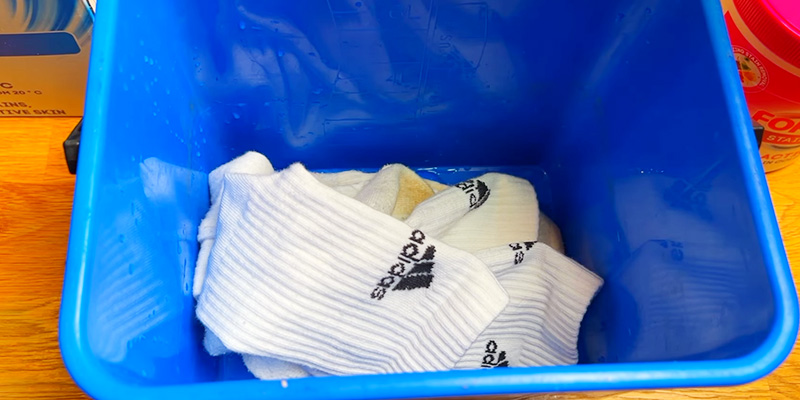
Cleaning white socks with vinegar is a natural and effective method to keep them looking fresh and bright.
Vinegar not only helps to remove stains and odors but also acts as a natural fabric softener.
Here’s how you can clean white socks using vinegar:
Materials Needed:
- White vinegar (distilled)
- A large basin or bucket
- Warm water
- Laundry detergent (optional)
- Baking soda (optional for tough stains)
Step-by-Step Guide:
Pre-Soak the Socks
Start by preparing a vinegar solution in a large basin or bucket. Fill it with warm water, ensuring there’s enough to fully submerge the socks.
Add one cup of white vinegar to the water and mix it thoroughly to create an even solution. Place the white socks into the mixture, making sure they are completely soaked.
This pre-soaking step is crucial, as the vinegar works to break down any built-up dirt, grime, and sweat embedded in the fabric.
The warm water helps to open up the fibers, allowing the vinegar to penetrate deeply.
For socks that are heavily soiled or have noticeable stains, extending the soaking time to about an hour can provide better results, as it gives the vinegar more time to work on tough spots.
Pre-Treat Stains (Optional)
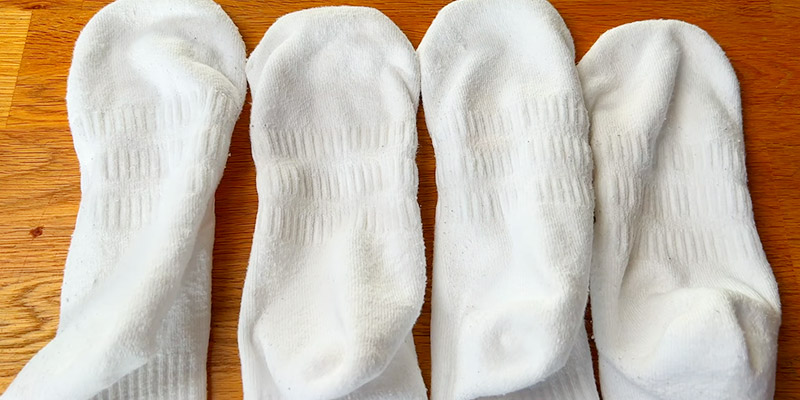
If your socks have particularly stubborn stains, it’s a good idea to pre-treat them before washing. Sprinkle a small amount of baking soda directly onto the stained areas of the socks.
The abrasive texture of the baking soda helps to lift stains by gently scrubbing the fabric. Gently rub the stained fabric together, allowing the baking soda to work into the fibers and interact with the stain.
Baking soda not only enhances the cleaning power but also neutralizes odors, making this step especially useful for socks that have been worn extensively.
Let the baking soda sit on the stain for a few minutes before moving on to the washing process. This extra step can make a significant difference in achieving bright, clean results.
Wash the Socks
After the socks have soaked in the vinegar solution, drain the basin and gently wring out any excess liquid from the socks.
For hand washing, apply a small amount of laundry detergent directly to the socks and gently scrub them, focusing on areas where dirt and stains are most visible.
The detergent will help to lift any remaining grime while the vinegar continues to work on brightening the fabric.
If you prefer to use a washing machine, place the pre-soaked socks into the machine along with your usual laundry detergent.
Set the machine to a normal wash cycle with warm water, as this temperature is effective for removing stains while being gentle on the fabric.
The combination of vinegar and detergent in the wash ensures a thorough cleaning, leaving your socks looking fresh and bright.
Rinse and Dry
Once the washing cycle is complete, it’s important to rinse the socks thoroughly with clean water to remove any remaining vinegar and detergent residue.
This step is crucial, as it ensures that no cleaning agents are left in the fabric, which could cause irritation or attract dirt in the future.
After rinsing, gently wring out the socks to remove excess water, but be careful not to twist them too hard, as this can stretch or damage the fabric.
Hang the socks to air dry in a well-ventilated area, preferably in direct sunlight. Sunlight has natural bleaching properties that can help to further brighten white socks, making them look as good as new.
If you prefer, you can also lay the socks flat on a clean surface to dry, which helps to maintain their shape.
Frequently Asked Questions
Can I use apple cider vinegar instead of white vinegar?
Yes, apple cider vinegar can be used as an alternative to white vinegar, but it may leave a slight residue or scent on your socks.
How often should I use vinegar to clean my white socks?
Using vinegar to clean your white socks once a month or whenever they appear dingy can help maintain their brightness. For heavily soiled socks, you might want to use vinegar more frequently or as a pre-treatment for tough stains.
Can I add vinegar to my regular laundry detergent?
Yes, you can add vinegar to your regular laundry detergent for an extra boost in cleaning power and odor removal.
Will vinegar damage the fabric of my socks?
No, vinegar is generally safe for most fabrics, including the cotton used in many white socks.
Why Are White Socks Still Dirty After Washing?
White socks remain dirty after washing due to insufficient pre-treatment, overloading the washing machine, using cold water, incorrect detergent, residual detergent, or worn-out fabric.

Hi, I'm Christopher Bevans, the creator of SocksWiki.com. With a background in fashion design and a passion for innovation, I’m here to share my knowledge on socks from troubleshooting tips to detailed buying guides. I believe the right pair of socks can make all the difference, and through this site, I aim to help you find the perfect fit for every occasion.
- Latest Posts by Christopher Bevans
-
Socks Smell Like Ammonia: Causes and Solution
- -
Best Socks Material for Sweaty Feet 2026
- -
What Socks to Wear With Cowboy Boots?
- All Posts
